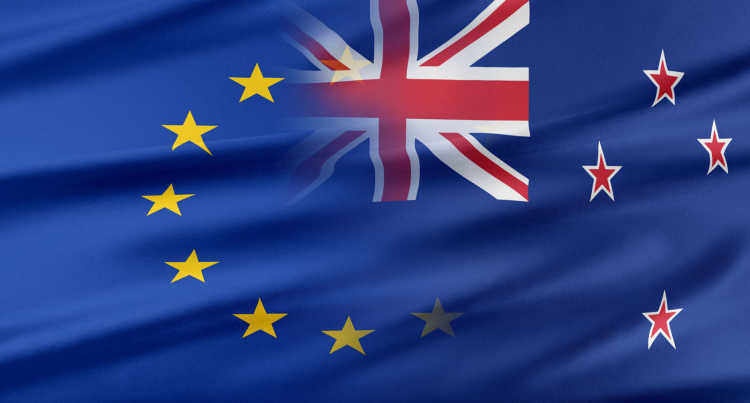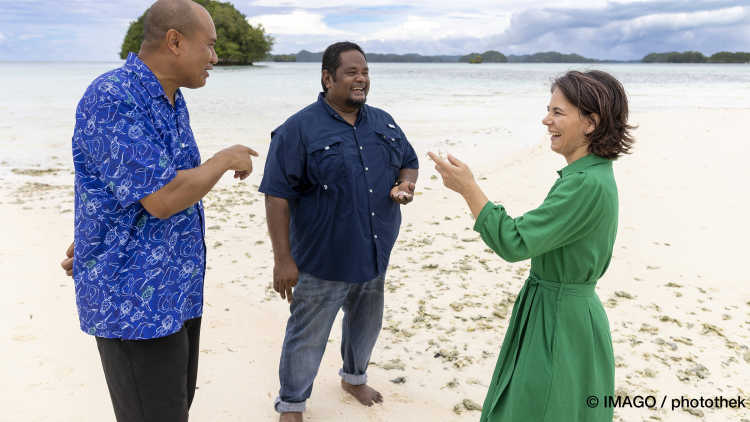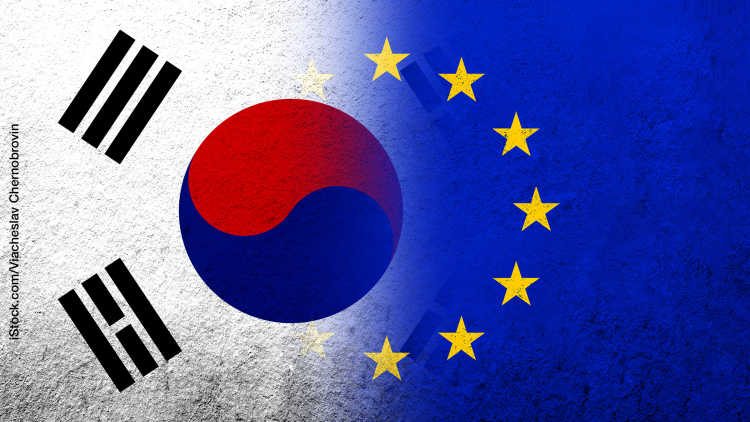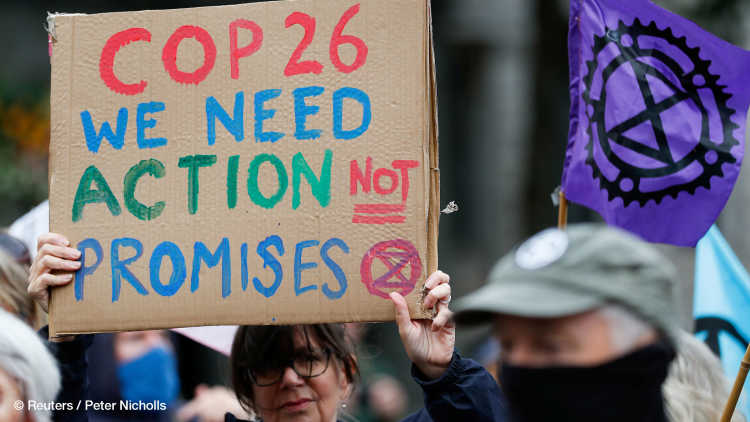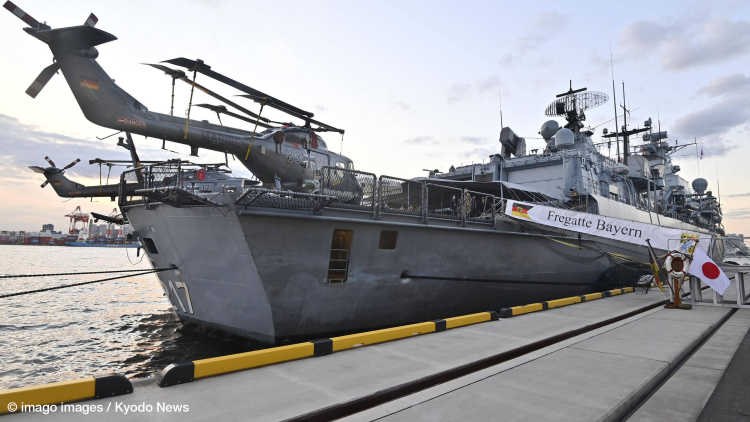- Startseite
- Publikationen
- GIGA Focus
- Beyond “Indo-Pacific”: Understanding Small Pacific Powers on Their Own Terms
GIGA Focus Asien
Jenseits von „Indo-Pazifik“: auch den kleinen Mächten im Pazifik gerecht werden
Nummer 5 | 2021 | ISSN: 1862-359X
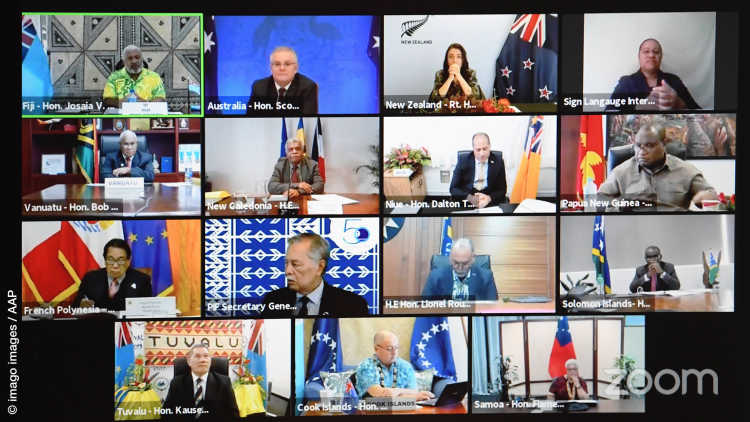
Im September 2021 präsentierte die Europäische Union (EU) ihre Strategie für Zusammenarbeit im Indo-Pazifik. Einige Staaten und regionale Organisationen verwenden dieses Konzept als Antwort auf die geopolitischen und geoökonomischen Dynamiken, die vom Aufstieg Chinas ausgehen. Die Linse des „Indo-Pazifik“ vermag es jedoch nicht, den Interessen und Perspektiven kleiner Mächte im Pazifik gerecht zu werden.
Der Indo-Pazifik ist keine in sich geschlossene Weltregion, sondern ein strategischer Raum, in dem China und die USA sowie andere regionale und extraregionale Akteure um Macht und Einfluss ringen.
Kleine pazifische Mächte können sich diesen strategischen Dynamiken nicht entziehen, versuchen aber ihre Handlungsautonomie zu erhalten. Sie sind besorgt über eine mögliche Militarisierung der Region.
Kleine Mächte im Pazifik sollten nicht auf Basis vereinheitlichender Konzepte wie „Indo-Pazifik“, oder wie im Fall von Neuseeland auch „die Anglosphäre“, begriffen werden, sondern auf Basis ihres Selbstverständnisses.
Die Pazifischen Inselstaaten (PIS) haben das Narrativ des „Blauen Pazifik“ entwickelt, um ihre kollektive Identität und geteilten Interessen darzulegen. Umweltbezogene und menschliche Sicherheit haben für sie größere Bedeutung als Fragen militärischer Sicherheit.
Neuseeland hat sich die „Indo-Pazifik“-Terminologie angeeignet, spricht sich aber für einen inklusiven Ansatz aus. Es versucht weiterhin, eine „unabhängige Außenpolitik“ auf Basis seiner Interessen und Werte zu verfolgen.
Fazit
Die EU-Strategie für Kooperation im Indo-Pazifik benennt sieben zentrale Handlungsfelder, die von Konnektivität bis hin zu Sicherheit und Verteidigung reichen. Nicht alle diese Felder sind für die Zusammenarbeit der EU mit den PIS und Neuseeland gleich wichtig. Ökologischer Wandel und Governance der Ozeane sollten in beiden Fällen Vorrang haben, während menschliche Sicherheit im Fall der PIS und Handelsliberalisierung im Fall von Neuseeland mit oben auf der Agenda stehen sollten.
The Rise of the Indo-Pacific
Until the early years of the twenty-first century the term “Indo-Pacific” was only known to marine biologists studying the fish and mammals traversing the Pacific and Indian Oceans. Today, the term can be found in many official documents, most recently in the European Union’s strategy for cooperation in the Indo-Pacific (EU 2021). The term “Indo-Pacific” has come to supplant in many ways its older “Asia-Pacific” predecessor, which epitomised the age of accelerated globalisation and economic interdependence centring on that region. The principal organisation of that previous age was the Asia-Pacific Economic Cooperation (APEC) established in 1989 to promote growth and regional economic integration. The “Indo-Pacific,” on the other hand, stands for a new era shaped by geopolitical and geo-economic dynamics linked to the rise of China. Its main institutional expression has been the Quadrilateral Security Dialogue (Quad) which brings together the United States, Australia, Japan, and India, engaging in dialogues, military exercises, and broader foreign and security policy cooperation. In the following, I trace the rise of the “Indo-Pacific” concept before discussing why it does not sufficiently capture the interests and perspectives of small powers in the Pacific.
The term “Indo-Pacific” had been used by strategic thinkers in India and Australia since the early years of the new century. It was later developed by governments in Delhi, where the term aligned with Prime Minister Narendra Modi’s “Act East” policy, and in Canberra, where it was first employed in a 2013 Defence White Paper referring to Australia’s two-ocean strategic environment centring on Indonesia. These early adopters were followed by Japan, whose PM Shinzō Abe had already spoken during a visit to India in 2007 about the confluence of the Pacific and Indian Oceans. Policy-relevant ideas later crystallised in Japan around the vision of a “Free and Open Indo-Pacific” (FOIP). There are three important dimensions to this policy: First, balancing: that is, developing a stable, multipolar equilibrium in the region that can accommodate both a rising China and the previously hegemonic US. Second, connectivity: building and improving infrastructure in the region and better connecting the Indian and Pacific Ocean parts of it too. And, third, order-building: emphasising the importance of maintaining commonly accepted rules and norms of interstate behaviour (Envall 2020: 69–71).
In all three countries, the Indo-Pacific is understood as an emerging, multipolar mega world region that matters profoundly not only in economic and demographic terms but also – given China’s rise and the diverse responses to that – in geostrategic ones too. The Indo-Pacific was always primarily a strategic initiative responding to the challenges posed by China’s rise. The basic idea has been to expand the relevant strategic space by embracing also the Indian Ocean region and India’s capabilities, thus making it very difficult for China to dominate this newly conceived space. The eminent International Relations scholar Amitav Acharya notes (in Stimson Center 2021) that imperialists coined the term “Far East” while nationalists in pre– and post–World War II China, India, Vietnam, and elsewhere rallied around the term “Asia.” “East Asia” has been the term of choice for culturalists, while economists did much to promote the concept of the “Asia-Pacific.” “Indo-Pacific” is, then, the term brought to life by strategists.
In the US, the “Indo-Pacific” entered the foreign policy lexicon in 2010, when it was used in publications and speeches foreshadowing the US “pivot” to the region. The latter included a strengthening of strategic relations with India and Australia as well as an improvement of ties with secondary powers such as Vietnam. Under the Donald Trump Administration, the US followed Japan’s lead and mainstreamed the FOIP as a policy concept in 2017. The Trump team then adopted in 2018 a national security strategy for the Indo-Pacific and renamed its former Pacific military command the “US Indo-Pacific Command” (see Figure 1 below). So far, the Joe Biden administration’s foreign policy suggests that the Indo-Pacific will assume even greater significance going forwards. The announcement of the AUKUS agreement in mid-September 2021 between the US, the United Kingdom, and Australia on supplying nuclear-powered submarines to the latter and on sharing other advanced technology relevant for security purposes is testimony to that.
Other states and regional organisations have also embraced the term “Indo-Pacific” in recent years – adding yet more subtle as well as different shades of meaning to it. Led by Indonesia, the Association of Southeast Asian Nations adopted the term in 2019 in its “ASEAN Outlook on the Indo-Pacific” with a view to safeguarding its claim to centrality in regional affairs. Meanwhile, some European states published strategy and policy papers outlining their approaches to the Indo-Pacific. France, which has overseas territories in both the Indian and Pacific Oceans, started the process in 2018. Germany and the Netherlands followed suit in 2020, foreshadowing the new EU strategy on cooperation in the Indo-Pacific. Finally, policy circles in the UK see the emergent Indo-Pacific as an opportunity to develop commercial ties and, more generally, as an important area for engagement in the country’s quest to reinvent itself as “Global Britain.”
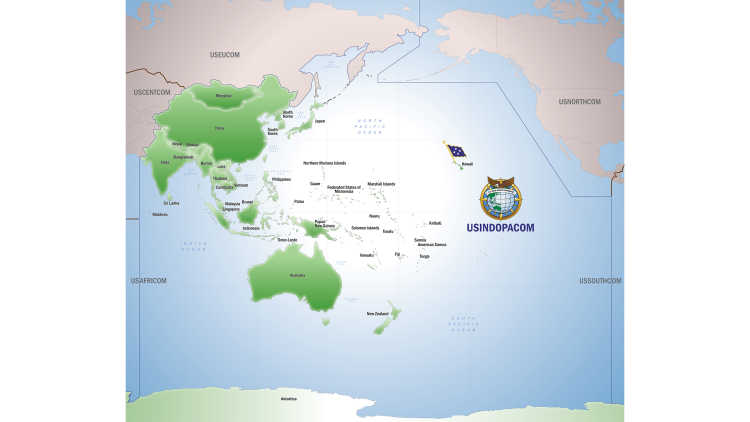
Implications of the Indo-Pacific Concept
Notably, the different existing concepts of the “Indo-Pacific” are all based on specific political intentions and interests. The term is therefore never merely descriptive or used without connotations (Heiduk and Wacker 2020: 8). The Indo-Pacific is certainly not a coherent world region that can be clearly demarcated. Tellingly, existing maps of the Indo-Pacific diverge in terms of the region’s exact geographical scope. Where the notion of the “Indo-Pacific” makes its contribution, Nick Bisley (2020: 218) argues, is as a means to organise policy in a climate of geopolitical contestation. The way policymakers define and imagine regions can affect, among other things, the allocation of resources and high-level attention paid, the prioritisation of security partners among different possible countries, as well as the membership and agendas of regional institutions.
Strategic priorities concerning the Indo-Pacific vary among state actors – Japan, for example, has prioritised multilateral free trade agreements (FTAs), whereas India is much more ambivalent in this regard. But they all highlight important and growing economic and security-related connections between the Pacific and Indian Ocean regions. And what they all have in common is the idea that the Indo-Pacific should not be China-dominated but rather a diverse, multipolar space whose different parts are respected. Not all states and regional entities employing the “Indo-Pacific” rubric would agree, however, the main aim is to “resist” – or, for that matter, “contain” – China. Some of the current visions are more inclusive than others.
To sum up: The “Indo-Pacific” label captures a huge and contested strategic space affected by a host of geopolitical and geo-economic dynamics – but also by shared challenges that do not respect borders (think COVID-19 and climate change). What happens in the orbit of this economic and strategic centre of gravity is of vital interest not only to countries in the Indo-Pacific themselves but also to other actors with global interests. While the relationship between the US and China will be a major factor in shaping the strategic environment in the Indo-Pacific in the years ahead, other countries and regional entities are also exercising influence in this emerging strategic space. Power- and influence-related rivalry, competition and cooperation will be visible in different measures in areas ranging from security and defence policy to economic and trade policy, cultural policy and climate policy, not to mention infrastructure- and connectivity-related policy as well. While the great powers in particular harbour a certain preference for bilateral approaches and hub-and-spoke-like arrangements, small powers and some middle powers have a clear-cut inclination towards multilateral approaches and arrangements based on shared norms and rules of engagement instead.
Understanding Small Powers in the Pacific: Beyond “Indo-Pacific”
The Indo-Pacific needs to be navigated not only by the US and China, regional powers like Japan and India, or by middle powers like Australia and Vietnam. A host of small powers like New Zealand (NZ) and other members of the Pacific Islands Forum (PIF), which also includes the French overseas territories of New Caledonia and French Polynesia, also need to come to grips with it too. NZ and Papua New Guinea aside, these small Pacific powers are microstates with populations of (often far) less than one million but large maritime Exclusive Economic Zones (EEZs). They all belong to the PIF, which was shaken in early 2021 by the announced exit of its five Micronesian member states (Köllner 2021). After the end of the Cold War the Pacific was considered a strategic backwater. This would change with China’s increased regional presence from the middle of the first decade of the new century and the responses of the traditional regional powers Australia and NZ to this development (Köllner 2020). The US is also seeking to tighten links with northern Pacific states by renegotiating relevant Compacts of Free Association. It has also strengthened its military presence on Guam, a US territory in the Pacific. Washington views the Pacific region as playing a critical role in helping to preserve the FOIP.
Pacific Island Countries: Pursuing a “Blue Pacific” Strategy
Yet, small Pacific powers do not view their regional environment and the challenges it faces through the same lens the US does. PICs have not embraced the “Indo-Pacific” label. They are concerned that geostrategic competition is being recast under this rubric and that the “Indo” gets privileged over the “Pacific” (Taylor 2018). Time and again PICs have argued that the single-greatest security threat to the region is not China but climate change – as also noted by the 2018 Boe Declaration on Regional Security coming out of the PIF summit in Nauru. Fijian Rear Admiral Viliame Naupoto captured this reality well when he suggested some years ago that, metaphorically speaking, there were three elephants fighting for influence in the Pacific: China, the US, and climate change and that of these three, climate change was winning (Sachdeva 2019). The Boe Declaration also affirmed an expanded concept of “security” that includes environmental security as well as human security – which relates to needs and vulnerabilities in terms of education, gender, health, human rights, and good governance (PIF 2019).
PICs do not view themselves as threatened in a military sense. And they do not want to be treated as pawns in some strategic game being played out in the Pacific and the wider Indo-Pacific. Not all but many of them see China’s increasing presence in the region as providing welcome opportunities for political and economic engagement beyond what traditional regional powers have to offer. PICs have sought to exert agency in dealing with both traditional and new regional powers, but also on the global stage. Climate change negotiations come to mind here, but there is also the broader context of PICs’ “New Pacific Diplomacy” consisting of collective action in the pursuit of shared interests across a range of issue areas also including ocean governance, seabed mining, sustainable development, decolonisation, and trade.
The strategic narrative that PICs came up with in 2017 seeks to counter their image as small and isolated nations somewhere in the Pacific. Based on their idea of a “Blue Pacific,” they have sought to develop a collective pan-Oceanic identity and to capture their shared interests as custodians of that space. The Blue Pacific narrative builds on reconceptions by key thinkers such as Epeli Hau’ofa of the Pacific as a vast but interconnected sea of islands. It seeks to convey the message that PICs are strategically important ocean states with special responsibility for a new “Oceania” that provides not only vital resources to the PICs themselves but also to the entire planet (Taylor 2018).
Sustainable ocean governance, including policies to address illegal, unreported, and unregulated fishing activities, is of vital importance for PICs. Climate change is another topic of the utmost importance to them. Global warming leads to more frequent and intense cyclones, the loss of coral reefs, ocean acidification, and coastal inundation. It also affects the movement of and access to important fish stocks, including the world’s largest reserves of tuna. The climate change-induced rise in sea levels poses an existential threat to small low-lying atolls and islands in the Pacific, such as those belonging to Kiribati – which calls the world’s twelfth-largest EEZ its own. Rising sea levels will lead to the increasing displacement of people and raise legal questions about the longer-term validity of existing EEZs. Such key challenges can only be addressed collectively, requiring not only regional solidarity but also effective cooperation with international partners.
New Zealand: Embracing the Indo-Pacific on Its Own Terms
NZ is a self-identified Pacific state with strong cultural and other links to the wider region. The country is a small power on the global stage but a regional one in the (South) Pacific. The increasing relevance of strategic considerations in the Pacific Islands region has led to heightened interest on the part of the EU and the US in working with NZ, especially so as the latter is considered a “like-minded” partner given its strong credentials as a liberal democracy. Yet seeing NZ solely or predominantly through the strategic lens of the “Indo-Pacific” would be short-sighted. Of dubious value are also other catch-all conceptual lenses sometimes used to make sense of NZ’s identity and foreign policy interests – whether it is “Five Eyes,” a collective intelligence-sharing network also involving the US, the UK, Canada, and Australia (see Young 2021), or the broader “Anglosphere.” This imagined community of English-speaking countries was recently evoked again in French commentary on the AUKUS agreement (Kaufmann 2021). Finally, there is a tendency to lump NZ together with its neighbour and ally Australia, as if the two were but inseparable twins.
Of course, the alliance with Australia is of great strategic importance to NZ. The two countries are also closely integrated economically and have teamed up on numerous occasions both on the regional stage and beyond. Still, the way NZ understands its place in the world and the perspectives its foreign policy actors have on regional affairs are not identical with those of Australia, a middle power with a different geographical setting and that is militarily allied to the US. And while there are plenty of historical, cultural, and institutional bonds between English-speaking countries, the “Anglosphere” is hardly the cohesive global actor some of its proponents – or, for that matter, conspiracy theorists – would have it be. The tendency to view small powers through some form of broad lens is thus problematic – they need to be understood on their own terms. Such an approach should not mean idealising “the other,” as Amrita Narlikar (2016: 7) notes, but allows instead policy differences to be recognised.
What are these own terms, then, in the NZ case? And, how does the current government approach the Indo-Pacific? Up until mid-2018, NZ’s response to the emerging “Indo-Pacific” concept was one of caution. “Asia-Pacific” remained the government’s term of choice when referring to the country’s broader regional environment. This terminology made, indeed, eminent sense to NZ because it captured well the country’s long-standing championing of multilateral approaches to dealing with cross-cutting issues both in the region and beyond. It also reflected NZ’s strong focus on trade issues. In fact, the NZ economy has benefitted greatly from the growing economic interdependence that characterised the erstwhile age of the Asia-Pacific. Befitting NZ’s pronounced “trade first” approach to foreign policy, consecutive governments in Wellington have spearheaded several FTAs at the bilateral, plurilateral, and regional levels since the 1990s, seeking to surf the waves of globalisation emanating from the Asia-Pacific. Last but perhaps not least, the “Pacific” part of the “Asia-Pacific” term nicely captured NZ’s own place and role in the region – much more than the simpler “Asia” would have done.
However, the “Golden Weather” period encapsulated by the “Asia-Pacific” rubric came to an end over the course of the last decade. It has been replaced by a stormier regional and global environment characterised by a new prominence of geopolitics and the advent of a number of geo-economic designs. The latter started with China's Belt and Road Initiative (BRI), which in turn led the US and others to come up with counter-initiatives often couched in terms of “connectivity.” Whereas the conservative NZ government led by PM John Key (2008–2016) signed up to the BRI, the current Labour-led government under PM Jacinda Ardern has been more circumspect in terms of following through on this. It also embarked on a “Reset” of relations with the Pacific, signalling to PICs and China but also the US and the wider world its intention to engage more in and with the region (Köllner 2020).
In late 2018 the NZ government also started to use the “Indo-Pacific” nomenclature. In a foreign policy speech given in July 2021, Ardern identified the Pacific as NZ’s “home,” “the region we most squarely identify with,” differentiating it from the Indo-Pacific as “the wider home for New Zealand” (2021: 7, 8). The PM stressed that while NZ welcomed the concept of the “Indo-Pacific” region, it did so based on fundamental principles such as respect for rules (consistent with international law) and for sovereignty, openness (in terms of trade, investment, movement of people, and supply chains), inclusivity (being open to all regional countries), and transparency (concerning foreign policy objectives and border-crossing initiatives). Success in addressing common challenges in the Indo-Pacific depended on “working with the widest possible set of partners,” Ardern (2021: 8) emphasised. Interestingly, this somewhat ambiguous comment can be read to include both the People’s Republic of China (PRC) and Taiwan.
As the speech makes clear, the NZ government shares with other countries concerns about power-based approaches to territorial disputes in the South China Sea. It has also become concerned about risks to PICs’ sovereignty due to China’s growing regional involvement (especially in terms of loans and debt). Finally, NZ would like China to be more upfront about its foreign policy and BRI-related goals. On the other hand, wholesale confrontation with China is not something that NZ would like to be part of. Ardern’s vision of the “Indo-Pacific” is more one of cooperation than one centred on US–China strategic competition. NZ’s interests as a trading nation come through in Ardern’s call for an inclusive and economically open Indo-Pacific. And like other Pacific leaders, she has on several occasions spoken out against a militarisation of the region – a message directed perhaps not only at China and PICs themselves but also at NZ’s partners in Canberra and Washington too.
As a small power, NZ has often had to engage in careful diplomatic balancing acts when dealing with big powers. Such balancing acts do not, however, imply neutrality or keeping mum where core values are concerned. Indeed, the NZ government has in the past two years called out – usually in concert with others, but not necessarily as part of Five Eyes let alone the Anglosphere – unacceptable Chinese behaviour as it perceives it – be it with respect to diminishing political freedoms in Hong Kong, denied World Health Organization membership for Taiwan, or human rights abuses against the Uighurs. Like other governments, it has alerted domestic companies to the risks of overreliance on the Chinese market and the need for diversification. NZ might also, on occasion, join hands with the Quad as part of some “Quad Plus” initiative.
Still, NZ governments will try not to be dragged into US–China strategic competition and to follow, as long as possible, an “independent foreign policy.” The term was used in the early 1970s, at the height of the Vietnam War, by then PM Norman Kirk to refer to a foreign policy that expressed NZ’s ideals and reflected its national interests – in other words, a foreign policy that would not blindly follow that of its (then) allies, the US and Australia. The term still implies that NZ governments make foreign policy decisions based on their own assessment of situations, considering the costs and benefits of different policy options and trying to choose the one that best aligns with NZ’s own values and interests. Of course, an “independent foreign policy” in alignment with NZ’s own national interests will always to a certain extent be whatever the government of the day makes out of it. While the Labour Party has traditionally emphasised international liberalism, the National Party has prioritised material interests instead. This should, however, not distract from the bipartisan support that both NZ’s long-standing nuclear-free policy and the strong trade focus of foreign policy enjoy across the parliamentary aisle. NZ’s partners who want to make sense of the country’s foreign policy behaviour will need to be aware of such principles.
Policy Implications
Homogenising conceptual lenses such as the “Indo-Pacific” do not capture well the interests and perspectives of small powers in the Pacific, especially so if it is just seen as a strategic space for zero-sum US–China competition. Understanding small powers in the Pacific on their own terms will enable EU and other policymakers to better assess the possibilities as well as limits of cooperation with these states. The EU’s new strategy for cooperation in the Indo-Pacific, a vast region understood as “spanning from the east coast of Africa to the Pacific Island States” (EU 2021: 1), forms a welcome basis for intensified cooperation with partners, especially “like-minded” ones, making up this global fulcrum. The offer of cooperation will be particularly welcomed by states in the Indo-Pacific that do not want to choose between the US and China and that are interested in exploring options that genuinely help expand their menu of choices.
The EU strategy for cooperation in the Indo-Pacific has been portrayed as an expression of the will of the EU and its Commission led by President Ursula von der Leyen to be a geopolitical actor on the global stage. Clearly the unfolding geopolitical and geo-economic dynamics in the Indo-Pacific form an important underlying factor in the chosen strategy. The media and pundits have devoted much attention to the strategy’s maritime-security angle with its call for a more coordinated naval presence by EU states in the Indo-Pacific. However, the strategy is much broader and multifaceted than suggested by this particular focus. Seven priority areas for EU action are sketched out: sustainable and inclusive prosperity (including trade-policy action); green transition (including climate-policy action); ocean governance; digital governance and partnerships; connectivity; security and defence; and, finally, human security.
Not all these priority areas will be of equal interest to small Pacific powers. More relevant than the hotly discussed security and defence domain or even the areas of connectivity and digital governance, in which the EU can at most play a complementary role in that part of the Indo-Pacific, will be other realms of cooperation. Given the interests of the Pacific’s small powers and the distinct geographic context they exist within, four areas for intensified cooperation stand out – also in terms of being low-hanging fruits. First, in view of the expanded concept of “security” affirmed in the Boe Declaration and given the needs of many countries in the region, human-security issues such as support for local healthcare infrastructures (and current needs in terms of fighting COVID-19) as well as support for natural-disaster preparedness should be top of the EU’s agenda regarding cooperation with PICs.
On the other hand, EU trade policy will be high on the agenda for cooperation with NZ. Eleven rounds of negotiations on an EU–NZ FTA have already taken place since mid-2018. While several issues still need to be resolved, a high-quality FTA covering the whole gamut of contemporary trade-related issues seems within reach. Such an FTA, coming on the back of the earlier EU-Japan Economic Partnership Agreement, would signal the EU’s determination to advance trade-related cooperation in the Indo-Pacific.
Finally, regarding EU cooperation with both NZ and PICs, green transition and ocean governance – two areas of importance in terms of the United Nations’ Sustainable Development Goals – should loom large on the agenda. This could include the early conclusion of Green Alliances with partners in the Pacific that credibly sign up to the goal of climate neutrality by 2050 as well as other ambitious climate and environmental objectives (EU 2021: 8). Given the fact that France, NZ, and individual PICs call huge EEZs their own, there is plenty of room for cooperation on sustainable ocean governance and economy issues too. Examples include combatting overfishing, establishing marine parks to protect biodiversity, fostering conservation efforts, and conducting joint marine-related research. Implementing the strategy for cooperation in the Indo-Pacific promises to be of the greatest and most immediate benefit to both the EU and small Pacific powers when not only their shared interests but also their respective perspectives on the nature of the “Indo-Pacific” are factored in.
Fußnoten
Literatur
Ardern, Jacinda (2021), Making way in a post-Covid world, in: New Zealand International Review, 46, 5, 7–9, www.beehive.govt.nz/release/prime-ministers-speech-nziia-annual-conference (27 October 2021).
Bisley, Nick (2020), Book Review of Rory Medcalf’s Contest for the Indo-Pacific, in: Australian Foreign Affairs, 9, 127–130.
Envall, H. D. P. (2020), The Pacific Islands in Japan’s ‘Free and Open Indo-Pacific’: From ‘Slow and Steady’ to Strategic Engagement?, in: Security Challenges, 16, 1, 65–77.
EU (European Commission and High Representative of the Union for Foreign Affairs and Security Policy) (2021), The EU Strategy for Cooperation in the Indo-Pacific, Joint Communication to the European Parliament and the Council, Brussels, 16 September, JOIN(2021) 24 final, https://eeas.europa.eu/sites/de fault/files/jointcommunication_2021_24_1_en.pdf (19 October 2021).
Heiduk, Felix, and Gudrun Wacker (2020), From Asia–Pacific to Indo-Pacific: Significance, Implementation and Challenges, Berlin: German Institute for International and Security Affairs, www.swp-berlin.org/fileadmin/contents/products/research_papers/2020RP09_IndoPacific.pdf (4 August 2020).
Kaufmann, Sylvie (2021), No Wonder the French are Angry, in: International Herald Tribune, 24 September, 1, 14.
Köllner, Patrick (2021), “Micronexit” Overshadows Golden Anniversary of the Pacific Islands Forum, GIGA Focus Asia, 2, April, www.giga-hamburg.de/en/publications/24403160-micronexit-overshadows-golden-anniversary-pacific-islands-forum/ (19 October 2021).
Köllner, Patrick (2020), Australia and New Zealand Face Up to China in the South Pacific, GIGA Focus Asia, 3, July, www.giga-hamburg.de/en/publications/20031118-australia-new-zealand-face-china-south-pacific/ (19 October 2021).
Narlikar, Amrita (2016), “Because They Matter”: Recognise Diversity—Globalise Research, GIGA Focus Global, 1, www.giga-hamburg.de/en/publications/11565749-because-they-matter-recognise-diversity-globalise-research/ (27 October 2021).
PIF (2019), Boe Declaration Action Plan, Suva: Pacific Islands Forum Secretariat, www.forumsec.org/wp-content/uploads/2019/10/BOE-document-Action-Plan.pdf (1 November 2021).
Sachdeva, Sam (2019), Where the Pacific Fits in the Security Debate, Newsroom, 4 June, www.newsroom.co.nz/2019/06/04/619389/where-the-pacific-fits-in-the-security-debate (27 October 2021).
Stimson Center (2021), ASEAN and the Return of Geopolitics to the Indo-Pacific, webinar, 22 September, www.stimson.org/event/asean-and-the-return-of-geopolitics-to-the-indo-pacific/ (18 October 2021).
Taylor, Meg (2018), Keynote Address to the 2018 State of the Pacific Conference, www.forumsec.org/2018/09/10/keynote-address-by-secretary-general-meg-taylor-to-the-2018-state-of-the-pacific-conference/ (29 October 2021).
U.S. Indo-Pacific Command (2018), USINDOPACOM Area of Responsibility, www.pacom.mil/About-USINDOPACOM/USPACOM-Area-of-Responsibility (19 January 2021).
Young, Jason (2021), China Policy and the Five Eyes, RUSI Commentary, https://rusi.org/explore-our-research/publications/commentary/china-policy-and-five-eyes (27 October 2021).
Gesamtredaktion GIGA Focus
Redaktion GIGA Focus Asien
Lektorat GIGA Focus Asien
Regionalinstitute
Forschungsschwerpunkte
Wie man diesen Artikel zitiert
Patrick Köllner (2021), Jenseits von „Indo-Pazifik“: auch den kleinen Mächten im Pazifik gerecht werden, GIGA Focus Asien, 5, Hamburg: German Institute for Global and Area Studies (GIGA), https://nbn-resolving.org/urn:nbn:de:0168-ssoar-75926-5
Impressum
Der GIGA Focus ist eine Open-Access-Publikation. Sie kann kostenfrei im Internet gelesen und heruntergeladen werden unter www.giga-hamburg.de/de/publikationen/giga-focus und darf gemäß den Bedingungen der Creative-Commons-Lizenz Attribution-No Derivative Works 3.0 frei vervielfältigt, verbreitet und öffentlich zugänglich gemacht werden. Dies umfasst insbesondere: korrekte Angabe der Erstveröffentlichung als GIGA Focus, keine Bearbeitung oder Kürzung.
Das German Institute for Global and Area Studies (GIGA) – Leibniz-Institut für Globale und Regionale Studien in Hamburg gibt Focus-Reihen zu Afrika, Asien, Lateinamerika, Nahost und zu globalen Fragen heraus. Der GIGA Focus wird vom GIGA redaktionell gestaltet. Die vertretenen Auffassungen stellen die der Autorinnen und Autoren und nicht unbedingt die des Instituts dar. Die Verfassenden sind für den Inhalt ihrer Beiträge verantwortlich. Irrtümer und Auslassungen bleiben vorbehalten. Das GIGA und die Autorinnen und Autoren haften nicht für Richtigkeit und Vollständigkeit oder für Konsequenzen, die sich aus der Nutzung der bereitgestellten Informationen ergeben.







